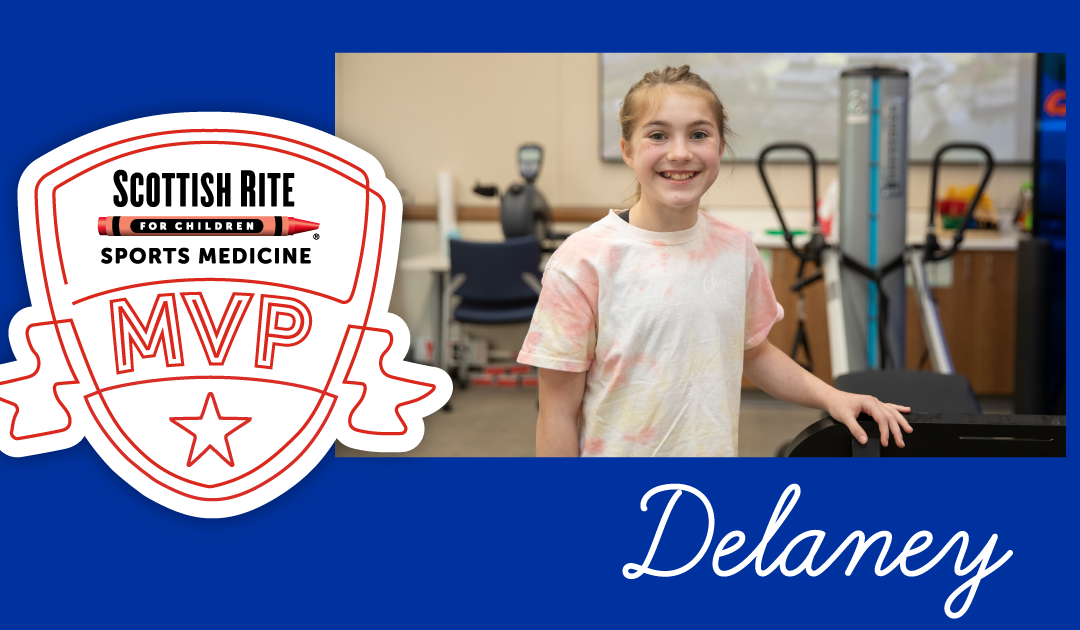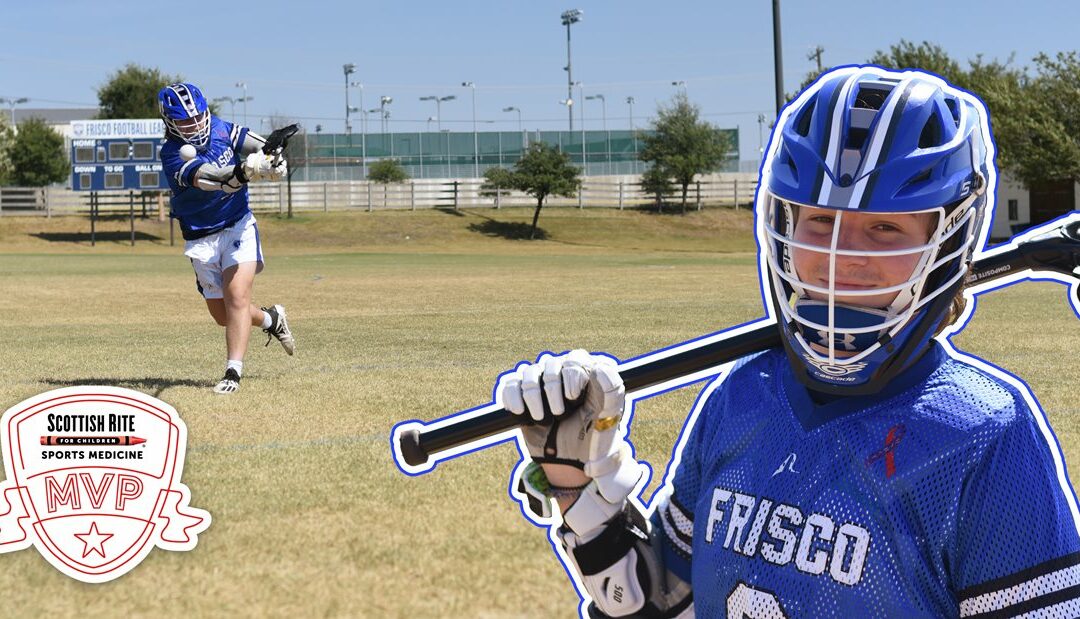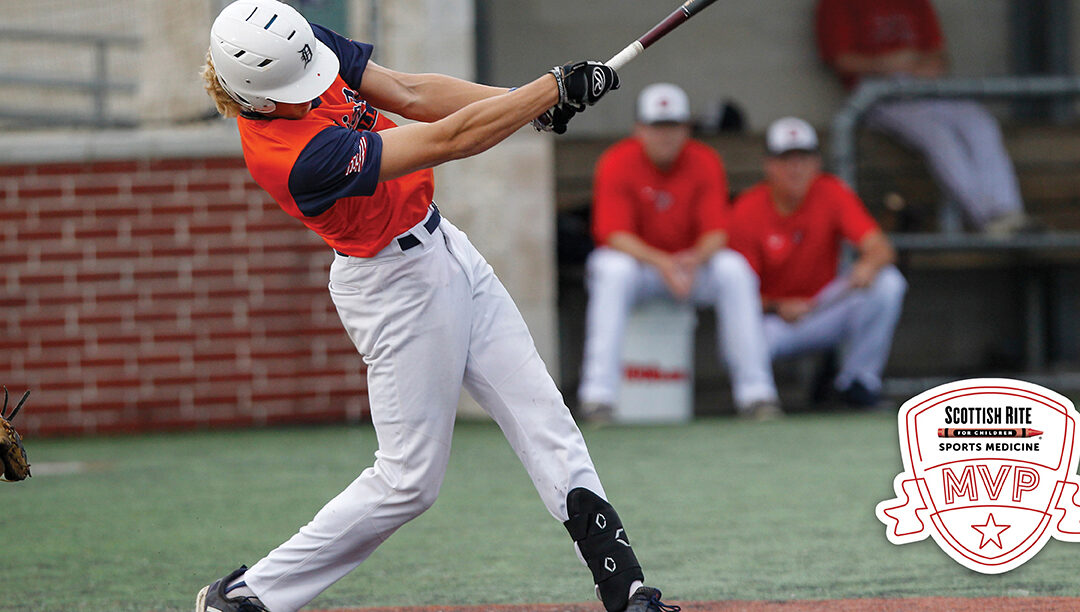
Bryce’s Treatment is a Home Run
Header image courtesy of Eddie Kelly/ProLook.
When an injury threatened to keep Bryce off the baseball field for nine months, he and his family turned to Scottish Rite for Children to get him back in the game.
Bryce has always loved baseball. “I’ve been playing baseball pretty much ever since I could walk and get a ball in my hand,” he says. His mother, Johnette, first saw glimpses of Bryce’s outstanding athletic ability when he was 4. “When the other team was batting, it didn’t matter where Bryce was playing, he would go all over the field to get the ball,” she says. “He was kind of like a one-man-team.” Bryce started pitching when he was 8, and Johnette saw a drive and a passion that were unlike what she saw in other young athletes. When Bryce became a teenager, he played on select baseball teams, and he spent several summers traveling for games. Bryce’s drive and determination paid off his freshman year at McKinney High School when he made the varsity baseball team.
Like many star athletes, Bryce played several sports, and enjoyed football when he wasn’t playing baseball. Sport diversification can help prevent injuries caused by overuse, but unfortunately contact injuries are harder to prevent. In his junior year, he and his team had made it to the second round of the playoffs. During practice, to get ready for the big game, Bryce went for a block and, after contact, felt his arm go completely numb. “I thought it was just some bumps and a bruise because it’s football,” says Bryce. “So, I played that second round, and played every snap on offense and felt fine, but it turns out, it wasn’t too great.” The day after the game, he and a friend went to the baseball field to throw the ball around, but Bryce quickly realized that there was a problem. “I couldn’t even throw the ball five feet, because it was hurting so bad,” he says.
Bryce had sustained a labral injury to his shoulder, which likely occurred when he subluxated (shoulder almost dislocated) or possibly dislocated (shoulder completely out of the socket) his shoulder. When the shoulder joint is injured this way, it can cause damage to the structures around the joint, including the labrum. The labrum is a ring of cartilage around the socket part of the ball and socket joint of the shoulder. When torn, the labrum is commonly thought to need surgery, but not always.
.jpg?width=400&height=266)
Initially, Bryce was told that surgery was necessary in order to return to sports and may take as long as nine months. This news devastated Bryce, so when his parents returned, they turned to the Scottish Rite for Children Orthopedic and Sports Medicine Center for another opinion. Pediatric orthopedic surgeon Henry B. Ellis, M.D., reviewed Bryce’s files and MRI, and felt that they could get him back to baseball with physical therapy instead of surgery. He felt with proper rehabilitation (physical therapy) and allowing enough time to allow the labrum to heal, Bryce could avoid a surgery and possibly be back to baseball sooner. However, this did mean that Bryce would have to give his shoulder enough time to heal before throwing a ball again.
Though encouraged by the option to avoid surgery, Bryce remembers being a little shocked at how difficult physical therapy was from the start. “It kind of killed my confidence a little bit and frustrated me, because I’ve always played a lot of sports and I always want to be the best that I can be. But once I saw improvement in how my body and my shoulder felt, I finally started getting back my confidence, so it was good.” Scottish Rite coordinated with the McKinney High School athletic trainers on a program to get Bryce back on the field as soon as possible.
Bryce was cleared to play in February, right before the team began preparing for the upcoming season. After all the hard work he had put into building back his shoulder, he was very excited to be with his team again. They were glad to have him back too – in Bryce’s first week back, he hit three home runs. Things were going great until COVID-19 forced an early end to the season. “All this is a little different,” says Bryce. “It’s like a curveball being thrown at us. But you just have to adapt and be able to adjust and focus on what you are there for.”
Bryce has complete confidence in his shoulder now. “I feel like I can do anything and everything that I’ve always been capable of doing,” he says. “If it wasn’t for Scottish Rite, I wouldn’t be where I am now.” Bryce recently verbally committed to play baseball at Northeast Community College in Mount Pleasant, Texas, and plans to continue his journey to Major League of Baseball.
Bryce is very grateful to Dr. Ellis. When others were recommending surgery, Ellis presented the pros and cons of a nonoperative plan. Bryce says he learned a lot from his experience. “When you go through hard times, you always have to keep your head straight and focus on the main goal, because you are going to go through ups and downs, but you just have to focus on the end result, and that was big for me. Not focusing on the negatives, but on getting back to where I needed to be.”

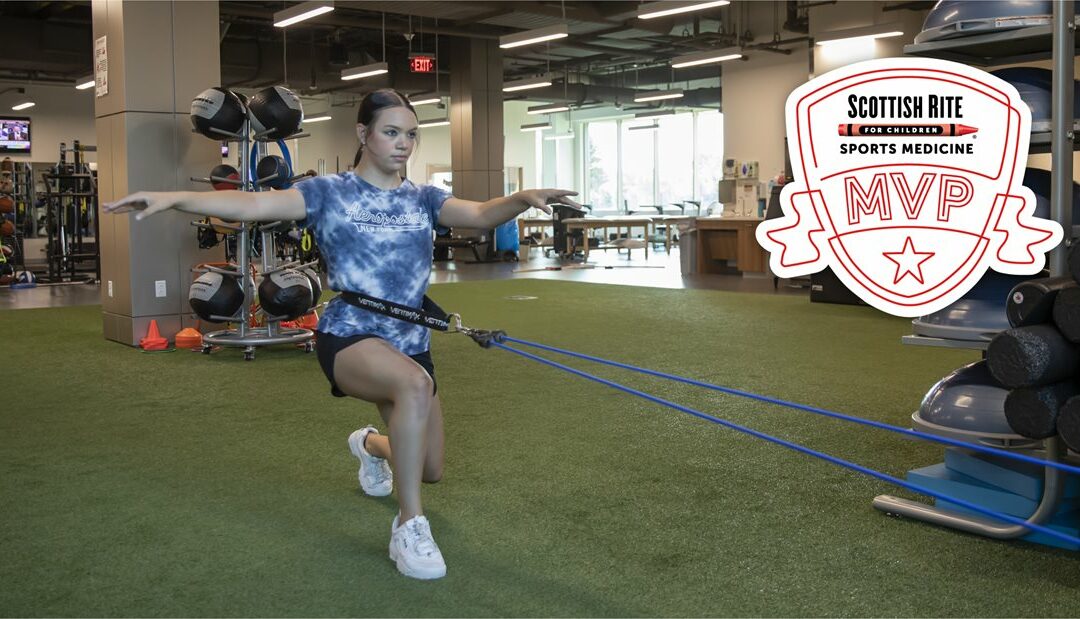
.png?lang=en-US&width=300&height=199)
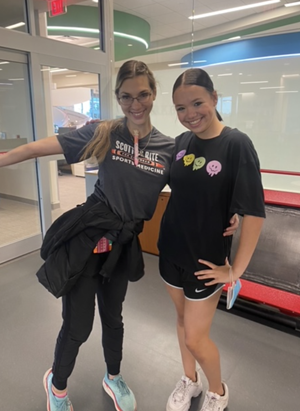
.png?width=350&height=232)
